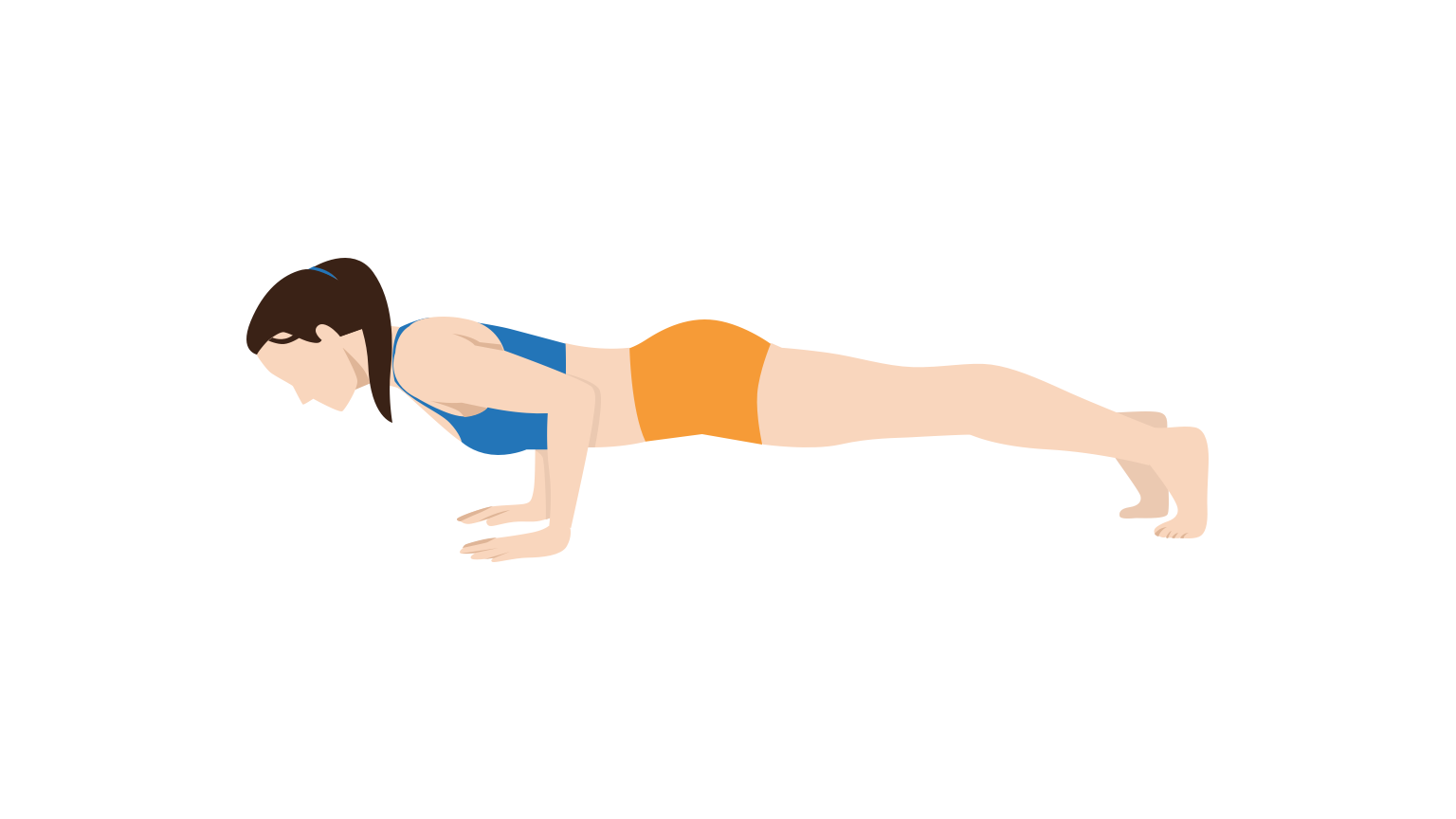Four Limbed Staff Pose (Chaturanga Dandasana)

The Four Limbed Staff Pose, also known as Low Plank Pose or Chaturanga Dandasana is a type of prone yoga pose. It is a key pose in the Sun Salutations sequence commonly practiced in Vinyasa style yoga. In the pose, your body is in a low plank position parallel to the floor, supported by your hands and toes. Your elbows are bent at a 90 degree angle and positioned close to your body.
- Position: Prone.
- Stretched body parts: The Four Limbed Staff Pose engages multiple muscle groups. In your arms, your triceps are engaged to support your body weight. Your core muscles are activated to help keep your body in a straight line. In your legs, the quads and glutes are also worked.
- Benefits: Practicing the Four Limbed Staff Pose regularly can build your upper body strength, particularly in your arms, shoulders and wrists. It also strengthens your core and lower back, which can improve your overall posture.
- Similar poses: Plank Pose (Phalakasana), Cobra Pose (Bhujangasana), Upward-Facing Dog Pose (Urdhva Mukha Svanasana), Downward-Facing Dog Pose (Adho Mukha Svanasana)
Meaning of Chaturanga Dandasana
The name “Chaturanga Dandasana” is made up of three Sanskrit words:
- “Chaturanga” means “four limbs”;
- “Danda” means “stick” or “staff”; and
- “Asana” means “pose”
A “staff” (or “quarterstaff“) is a old kind of weapon in the shape of a straight pole or stick. The name reflects your straight and rigid body in the plank position. Put together, we get the name “Chaturanga Dandasana” which translates literally to “Four limbed staff pose”.
How to do The Four Limbed Staff Pose
- Start in a plank position with your hands directly under your shoulders.
- Lower your body towards the mat, keeping your back and legs in a straight line. Lower until your elbows are at a 90 degree angle, keeping them tucked close to your body.
- Keep your gaze forward, with your neck long and relaxed.
- Hold the position for a few breaths.
- To release, either lower yourself down onto your stomach, or push back up to the plank position.
Variations
- Easier pose: If you find it difficult to maintain the plank position, start by resting your knees on the mat, rather than supporting your bodyweight with your toes.
- More challenging: For more challenge, see if you can raise one leg or one hand off the mat during the pose.
Tips
- Be mindful of your shoulder position in relation to your elbows. Do not left your shoulders dip below your elbows.
- Keep your body in a straight line from your neck to your toes. Avoid letting your hips sag or your lower back drop.
- Keep your elbows tucked close to your body throughout the pose. Do not let your elbows flare out to the sides.
- Don’t hold your breath. Make sure you breathe as you hold the pose.
Prep poses
- Cobra Pose (Bhujangasana) – Cobra Pose increase the flexibility of your spine. It also draws your shoulders down and back, improving your shoulder flexibility. Both of these qualities can help when performing The Four Limbed Staff Pose.
- Downward-Facing Dog (Adho Mukha Svanasana) – This pose stretches and strengthens your arms, legs, shoulders and back.
- Plank Pose (Phalakasana) – This is a very similar pose, except you don’t lower your body down by bending at your elbows. This makes it somewhat easier to perform as your triceps do not have to support your bodyweight.
- Upward-Facing Dog (Urdhva Mukha Svanasana) – This yoga pose is similar to The Cobra Pose, except your thighs and pelvis are lifted off the ground. This makes it more challenging than the Cobra Pose.
